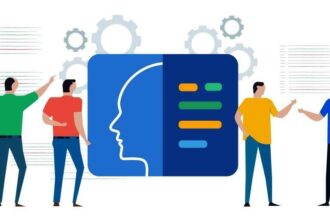Technology has become so advanced that, today, there’s an app for almost anything, from children’s education, to home improvement, to health monitoring, to workplace productivity. Gathering critical data to determine the best action to apply to specific situations has become integral in people’s daily lives.
Because of technology, critical decisions are now mostly based on scientific data. This makes every action more precise and error-free, especially in the business world. By using artificial intelligence and machine learning, industries can better cope with their consumers’ demands.
Companies can function better and deliver the best outputs if their employees are happy and productive. The country with the highest percentage of labor productivity is Ireland, with 99.5% productivity despite having only a four-day work week. This only means that longer hours don’t equate to productivity.
Today, companies use machine learning, in particular, to ensure that they achieve the appropriate productivity output for the amount of money they spend on their business operations. Because aside from the need to organize unusual indoor team-building activities to boost employee morale, companies today need to elevate the operational activities they conduct at work to ensure their teams are consistently productive.
Here are some of the ways companies achieve such through machine learning:
1. Anticipating Changes In Labor Needs
The retail landscape often finds it challenging to keep personnel costs low, while ensuring that customers are happy and satisfied. There are periods when a retail store doesn’t have customers for an extended period and having several staff members handling the store can be utterly unproductive and costly.
A labor scheduling tool that gathers information based on results, which is then entered in the POS, will increase the productivity of a retail store. This tool ensures that crucial metrics, such as personnel hours, items per transaction, and hourly sales, are considered to determine the appropriate number of staff to deploy at specific times of the day.
Hiring decisions will also be guided and labor costs significantly reduced because a labor scheduling tool will help an organization determine if they need to hire full-time or part-time employees. Hiring part-time employees is more cost-effective. And, if the tool predicts that there’s no need for full-time employees, it’d be better and increase a company’s bottom line.
2. Hiring The Right People
Hundreds of job applications come through the doors of the human resources department daily and filtering these applications so the right people can get hired to perform the essential workplace tasks can sometimes be daunting. Ordinarily, a person assigned to go through these applications may have biases or could unintentionally allow their emotions to affect their judgment.
When a tool is tasked to filter job applications, it can do so without biases and ignore the appeals to emotion altogether. A tool like a recruiting application that filters the unique qualifications of job applicants can help human resources hire the right people for the company.
The recruitment application will be tasked to watch out for crucial factors inherent in a bad hire and would try their best to avoid this from getting into the pool that’ll move up to the next level of the application process. This way, only applicants that match the values of the company will eventually be onboard to perform relevant tasks for the company.
3. Using The Power Of Chatbots
Your business can benefit a lot from chatbots. Historical responses on platforms that are automatically saved on the system will be added to the predictive answers of customer inquiries. Now, should any question be unanswerable by a chatbot, it’ll be immediately forwarded to a team member for proper acknowledgement.
This increases productivity and response time, which is also a valuable component of customer satisfaction.
4. Making Accurate Sales Forecasts
Information gathered from various channels can efficiently help managers make closer to accurate forecasts. In doing this, proper deployment of manpower can be achieved. Information from all platforms, like social media marketplace, ecommerce stores, and brick and mortar store can be gathered to create sales forecasts that’ll be useful in the production aspect of the business.
If you know how many sales are coming in, factoring in other crucial details, like events, can give you a more straightforward way of predicting what’s to happen in the near future. This will increase productivity and reduce production waste at the same time.
5. Utilizing Enterprise Search
Your team members and customers can benefit from enterprise search powered by machine learning. If you have a massive business, content could be challenging to look for, especially if such pieces are scattered through various channels and platforms.
With a few clicks on your device, customers and team members can gain access to a mine of information that’ll be useful for their respective tasks. Having access to information will allow people in your organization to accomplish tasks efficiently and more productively.
Conclusion
Labor hours spent doing nothing are wasted money. Ensuring that all people deployed in your organization for the day are functioning at their best and are productive will guarantee higher profits for your company.











